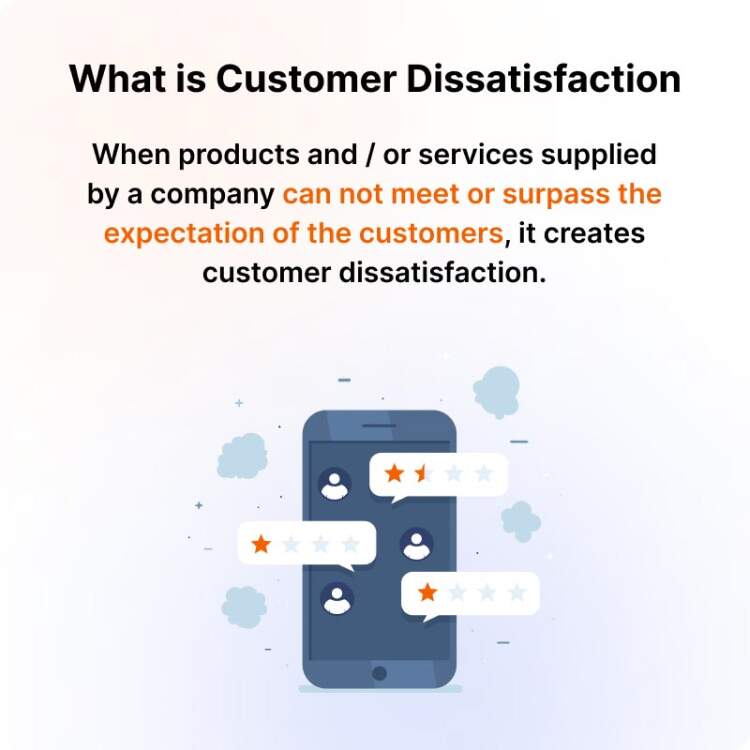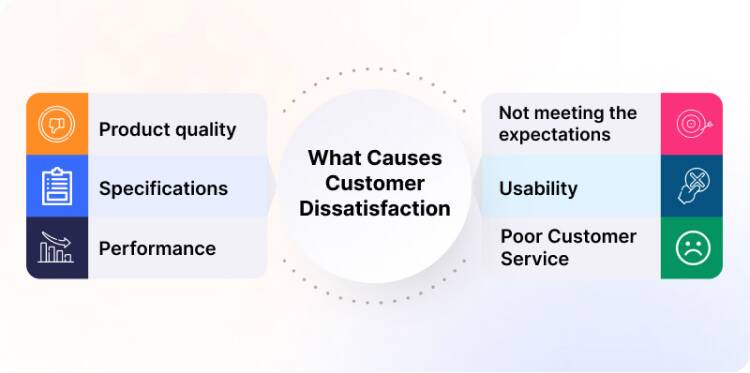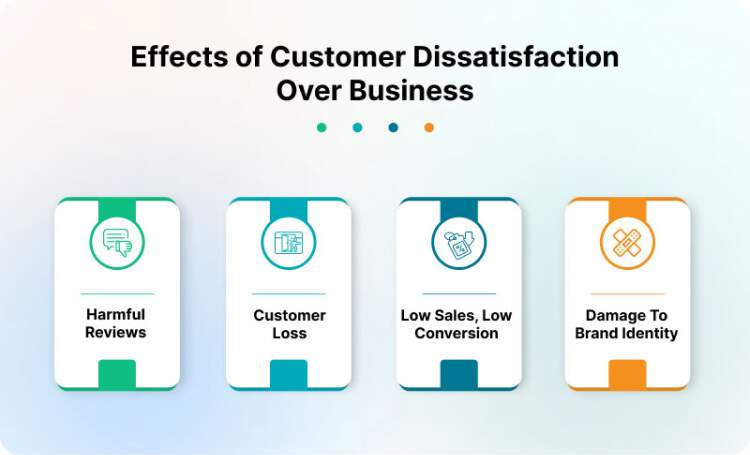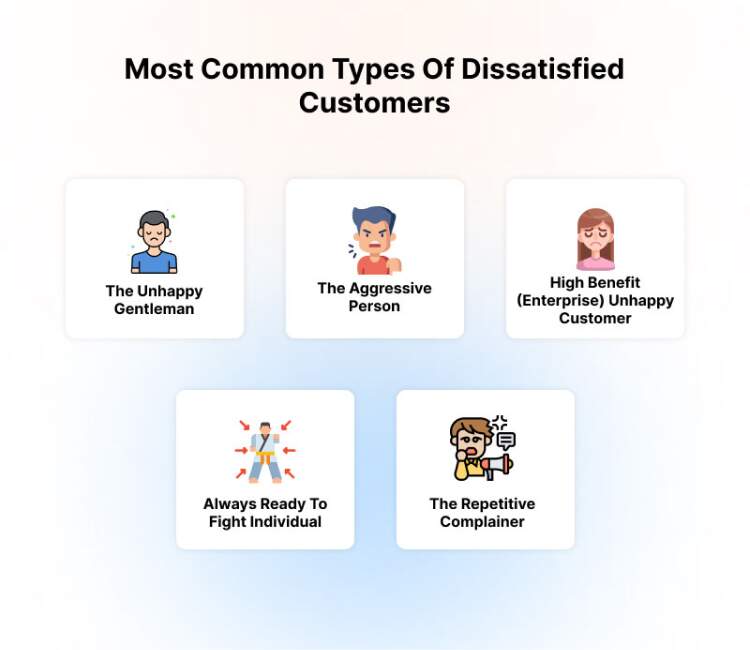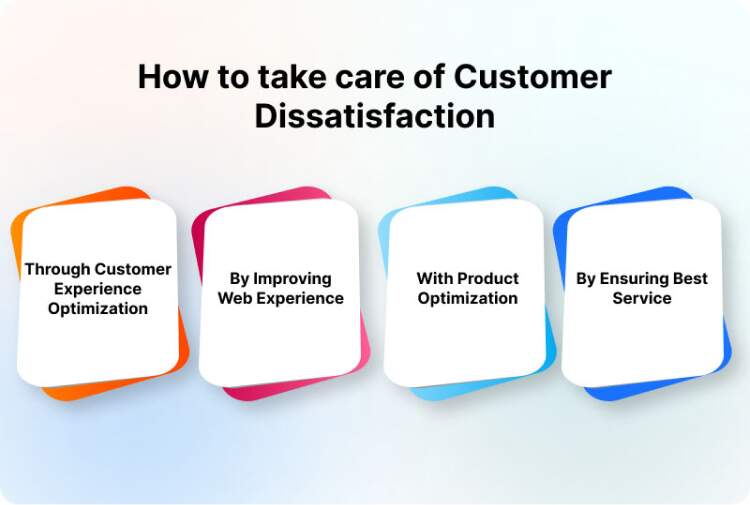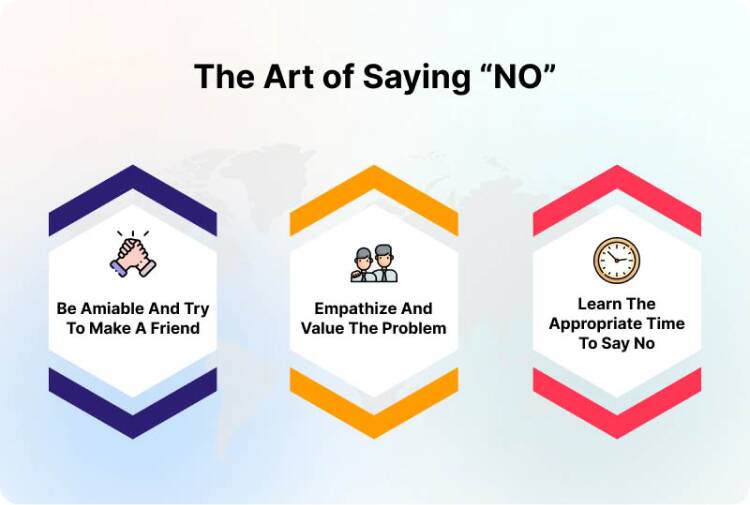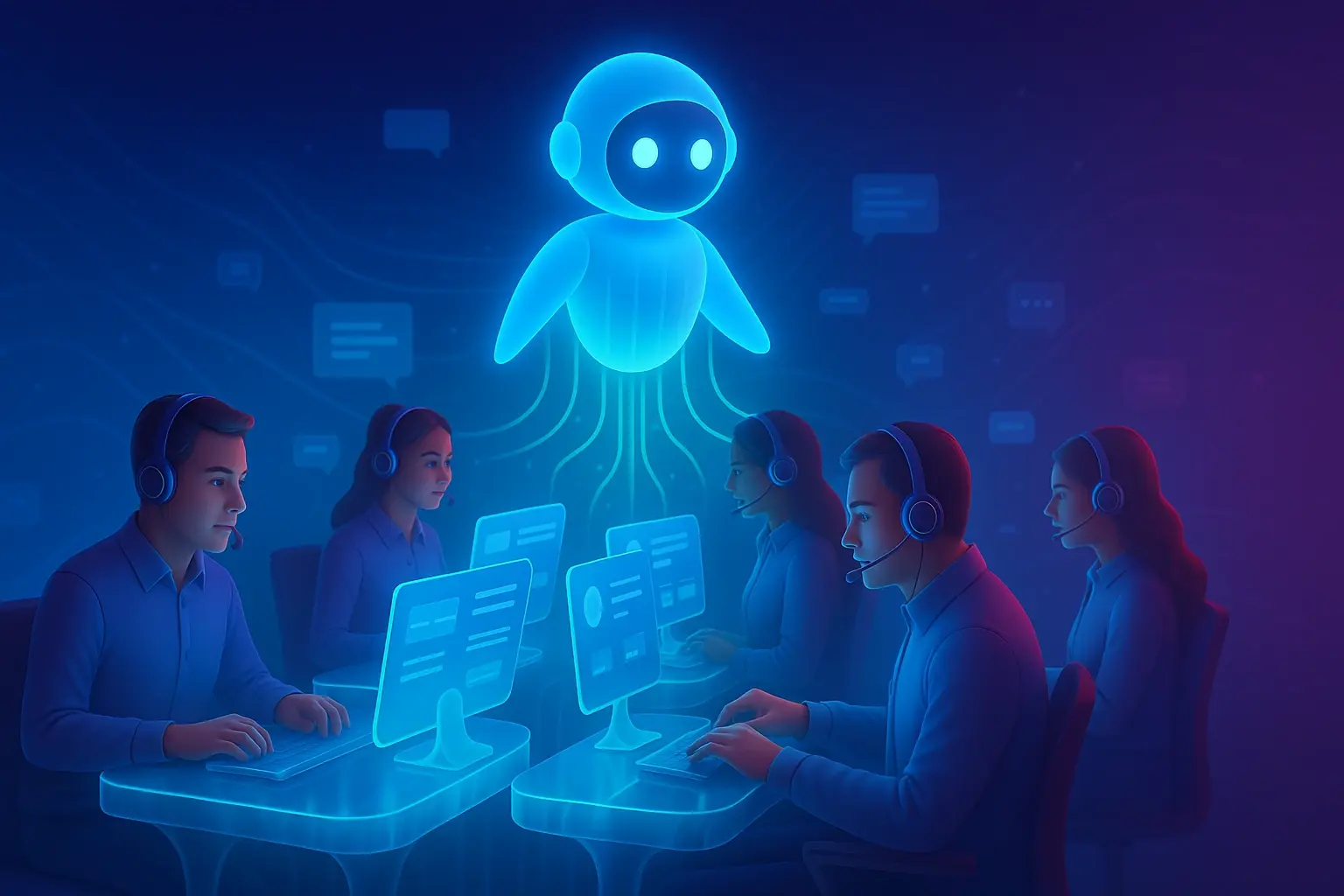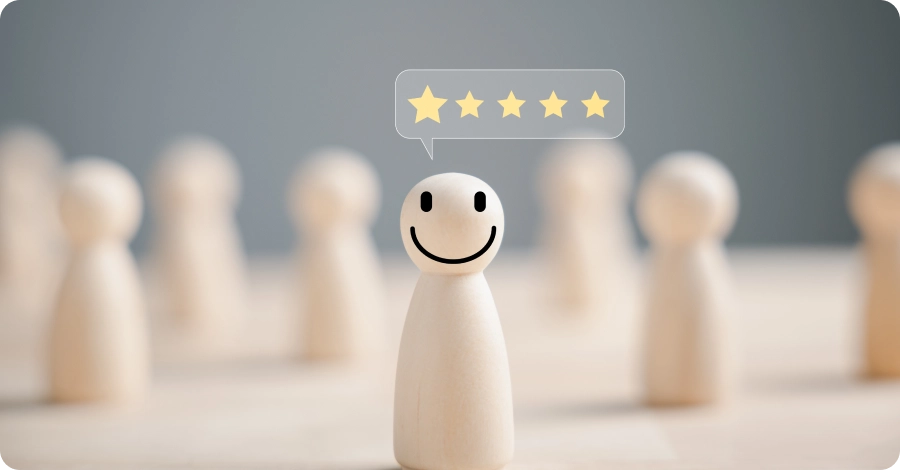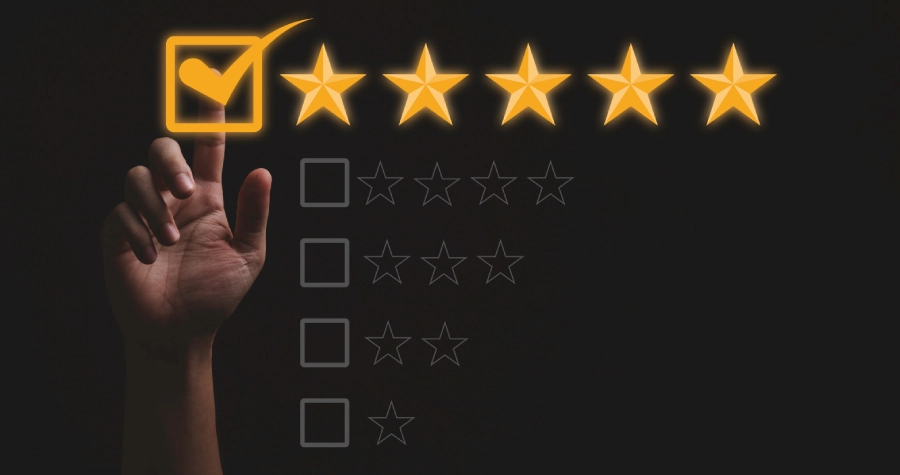How to Overcome Customer Dissatisfaction – A Complete Guide
- March 28, 2022
- 13 mins read
- Listen

Customer dissatisfaction is a big no for any successful business. In this modern and competitive world, no one wants a dissatisfied customer. Customer satisfaction is often viewed as a key performance indicator (KPI) within businesses, therefore employees are always on a pursuit to ensure it.
However, there could be tons of reasons behind a customer being dissatisfied, starting from product quality to price, going all the way down to after-sales service.
In this write-up, we will look into the core of customer dissatisfaction, what causes it, the consequences, and ways to approach it. Let’s begin, shall we?
What is Customer Dissatisfaction
Assume you bought a branded product from a shop, only to discover later that similar products are available at a lower price elsewhere. Or you buy a product regardless of the price, however, its performance is not up to the mark.
In a different scenario, where you were satisfied with price and performance but an unexpected issue forced you to contact customer service where you had poor after-sales service. All of these examples represent customer dissatisfaction.
In a nutshell, when products and/or services supplied by a company can not meet or surpass the expectation of the customers, it creates customer dissatisfaction. If your product or service fails to comply with your customer’s expectations or has shortcomings, that leaves a really bad reputation and adds to more dissatisfied customers.
What Causes Customer Dissatisfaction
There could be various reasons for customer dissatisfaction, what’s important is to understand the causes behind it and try to find a solution to them. Here are some most common factors behind dissatisfied customers.
Product Quality
Let’s face it, the source for most of the dissatisfied customers is poor quality. When customers have issues with the quality of your product or service, it leads to disappointment. If the product or service quality is unmatched, you’re in for a lot of angry customers and poor reviews.
Specifications
Did you know, lemonades and lemon juice are not the same? Lemon juice is the extract of lemon whereas lemonade contains sugar, water, and sometimes other flavorings along with the lemon juice. Now, if a customer orders you lemonade but he’s served with lemon juice, he’ll certainly not be a happy customer!
Every product has a certain specification and usually detailed specifications are labeled somewhere on the packaging. Somehow if those specs are not met or there is a difference between declared and actual specifications, it creates customer dissatisfaction.
Performance
Apple is a tech giant and its products consist of the lion’s share of the industry. Some say it’s because the performance of an iPhone or a Macbook is simply superb. Be that the user experience, the longevity, or the smoothness of the machine, these products are way ahead of their competitors. So, Apple has a very satisfied user base.
What it means is, all the products or services are measured/compared with specific performance metrics. There could be various different criteria including speed, power, durability, appearance, etc. All products or services are compared against each other in the same category by the customers.
Not Living Up To The Expectations
Talking about Ipohnes, remember the Bendgate scandal? When iPhone 6 series smartphones were bending in people’s pockets allegedly due to poor design from Apple? Well, it can be a perfect example of expectation-related customer dissatisfaction.
With the performance, design, and service, Apple has created certain reliability about its products. In addition, when you spend hundreds of dollars on a smartphone, you do expect a certain level of integrity compared to similar options.
However, when that expectation is not up to the mark, it becomes a perfect customer dissatisfaction example.
Usability
Customer satisfaction highly depends on how easy the product or service is to use. If your product or service lacks user-friendliness, you can not expect positive feedback from the users.
You buy a new toy but you can’t figure out how to play with it. Or you buy a new tv but you have difficult times navigating through it, it seems too complex, how would you feel? Definitely not happy!
Usability is essential for websites. If visitors get perplexed when using a website, most probably they are gonna have a poor experience and leave it soon, which in turn will harm the brand or the company badly.
Poor Customer Service
Lacking in high-quality customer service could be another potential customer dissatisfaction source. If it’s a physical shop, was the salesperson helpful? Did they guide the customer in finding the perfect choice?
In an online scenario, when support was needed how the customer service agents handle the customer? Did they provide a solution? How easy was the transaction process? How smooth was the refund or return process? Everything contributes to the customer service experience.
If customers find the customer service to be amiable and smooth, there are high chances they will return to you. On the other side of the coin, a poor customer service experience creates a big headache for any business.
Effects of Customer Dissatisfaction Over Business
Why is the cost of customer dissatisfaction so high? Let’s look at the harmful effects and outrage caused by dissatisfied customers.
Harmful Reviews
On top of the list, we have those negative reviews coming from angry customers.
Firstly, bad reviews coming from dissatisfied customers hit your brand hard. Because, as people are getting more and more accustomed to online shopping, reviews play a vital role in their purchase decision-making.
If you’re thinking, well I control the environment of my website and I can fabricate if my reviews get too poor, it’s not that easy either. With common platforms and social media booming, a dissatisfied customer can just go to your social media page and bombard the comment section with displeasure, can go to google, and leave a poor rating.
Because it’s in human nature to express more displeasure than pleasure. It’s very common to leave a poor review after a bad experience rather than leaving an excellent review after a satisfying one.
Customer Loss
Customer dissatisfaction & harmful reviews ultimately result in the loss of customers. No one wants to order from a place with negative reviews, do they?
On one hand, a dissatisfied customer would probably never come back to buy from you and on the other, the negative experience spreads rapidly to hamper the growth of new customer numbers.
Lead Gen & Conversion Plumbs, Sales Go Down
If there is a negative reputation about a product among the masses, people will be less likely to make a deal with that. They will be reluctant to buy or pay for that service upfront. This has a direct effect on the sales funnel and leads conversion rate.
This also affects the lead generation process as well. Dissatisfied customers are less likely to spread the news about your brand. Even if they do, it will be a poor review so the growth of lead gen will be greatly affected.
Brand Identity Hampered
All of these effects add to the loss of brand identity. An unhappy customer avoids not only a product but a bad reputation of the whole brand is created. This affects other products/services from the same brand even if those had nothing to do.
Most Common Types Of Dissatisfied Customers
Founder of Microsoft, Bill Gates once said
“Your most unhappy customers are your greatest source of learning!”
Now, all the dissatisfied customers are not the same. In fact, there lies a difference between dissatisfied customers and unhappy customers. Let’s have a look at different types of customers, from polite to aggressive to impertinent
The Unhappy Gentleman
As the name suggests, this type of dissatisfied people is, in fact, gentlemen. Often they do not complain, do not raise their voice, simply switch to another service, never giving you the chance to correct your flaws.
According to a study by 1st Financial Training services, 91% of unhappy customers simply leave and never come back. This absence of feedback is often confused with satisfied customers which creates even more problems.
The Aggressive Person
This is the opposite of the previous type. They are often vocal about their problems and demand a proper solution to their problems without any excuses. This type of customer can be a blessing in disguise for a company.
Because according to a study, the probability that you sell to an existing customer lies between 60 to 70% whereas a new prospect has only a 5 to 20% chance to convert. The aggressive customers are at least not leaving you silently, as they raise their voice, you actually have a chance to take a look at the issue and keep your existing customer.
High Benefit (enterprise) Unhappy Customer
These might be your enterprise customers. As they pay premium fees, they also demand top-class support. Also, their complaints are often genuine and noteworthy. Giving excuses or trying to avoid them is not an option for a customer like this. Rather, attention to detail in solving their issues is a must.
Always Ready To Fight Individual
This type of customer is the most impertinent. They are always aggravated, not ready to listen and instead of looking for a solution, they are more interested in a heated argument. These are tricky types of customers and should be handled carefully.
The Repetitive Complainer
Unlike the first type, a repetitive complainer is never satisfied. They might well be the most frustrating customers to deal with but unlike the previous type, a repetitive complainer might accept a possible solution and in the long run, might well be a repeat customer as well.
Taking Care of Customer Dissatisfaction Through Customer Experience Optimization
A mistake businesses often make is, they consider consumer satisfaction and dissatisfaction as an after-sales issue. However, customer experience is something that way before a potential customer makes a purchase decision. As a result, actions might be needed at any stage of the customer experience to treat poor customer satisfaction.
Customer experience optimization is a great way to treat customer dissatisfaction. What are the essential parts of customer experience that frequently need tweaking and treatment? Let’s take a look
Web Experience
The modern world business is highly dependent on websites and apps. Most of the time a potential customer will have the first interaction with your product or service on your website. So, it’s essential to optimize the web experience your clients are having. From the homepage to the view page to product showcase, even during the transaction, customers should have a smooth experience.
That’s where collecting data and their analysis comes into play. Collect data from every available option, take the Google Analytics data, ask questions to your customers and take on the customer survey data. Use those to prepare a flawless website where your customers can roam effortlessly.
Product Experience
The website is for showcasing and selling your product. When it comes to the product itself, how is it performing? Are the existing customers satisfied with the service? Are you gaining new customers? How easily can a newbie get accustomed to your product?
Try to get answers to all those questions and optimize your product accordingly. Also, check if your product requires any new feature updates.
Communication Experience
Customers demand the best of service when they contact the customer service center. So, it’s a definite place to look for customer experience optimization.
How long do your customers need to wait in line before they get their desired support? How lengthy is the support ticket queue? How friendly is your support executive’s behavior? How many unsolved support tickets are there? Take a look at everything.
Moreover, communication never indicates a single-sided discussion. When you reach your customers via an email, text message or any sort of campaign, make sure to have a proper communication channel. Communicate with your customers with new offers, services, product updates, and more.
Customer Service Communication Hack – The Art of Saying “NO”
The primary goal of any support executive is to provide a satisfactory solution to the client. However, in the real world, not every possible problem is bound to have a solution. And even if there is, just like we’ve seen in the different types of customer classification, not every customer is ready to accept a probable solution.
Nevertheless, the goal of proper customer service is not only to provide a solution but also to nurture the customer for a prolonged relationship. And here comes the tricky part, you have to say “no” to the customer without giving them the feeling that you’re letting them down. You have to learn the – art of saying no!
Be Amiable, Try To Make A Friend
The person you always look up to is a friend. How can a customer service person be a friend? If a customer service executive can give the feeling that he’s actually feeling the issue of the customer and trying hard to solve it, that might do. Even if the request can not be accepted, if an alternative is provided amicably, the customer’s satisfaction level will definitely rise!
If you meet a customer requesting a refund but that’s not possible due to the company policy, a way to appease the situation might be offering him a different solution than the initial refund request. Rather than simply denying their request, try to provide them with an option in a friendly manner.
Empathizing & Valuing The Problem
The person on the contact point to the customer is not the one making policies or making decisions, most of the complaining customers understand this. However, it’s not a nice experience to reach out to the call center only to find the people there who can not provide a solution. Anger is a very common expression that can come out here.
That is the reason why customer service should practice empathy for the customers. Some very common phrases like “I’m so sorry this happened to you” or “Your experience is so unfortunate and frustrating sir” not only clear the air but also remind customers that they’re only talking to a human who’s also just doing the job.
Learn the Appropriate Time To Say No
Even though being friendly, emphasizing, valuing the problem are all very important traits of a customer service representative, that doesn’t mean you have to accept everything a customer says.
There’s a clear line between an angry or demanding customer and a rude, insulting one. And there is no way you should tolerate any abusive behavior during work.
In fact, workers are legally protected by law against rude and abusive behavior in many countries. Scotland passed a new law to protect frontline workers against abusive customers. The US Congress is considering a bill to protect healthcare workers from abuse.
So, it’s completely ok to say no to an abusive, anti-social, mannerless customer.
Customer dissatisfaction is completely the opposite of customer satisfaction. When customer expectations are not met and the company fails to do anything about the complaint, the dissatisfaction rate rises. It’s high time that everyone should focus on similar issues if they plan to take their business to the next level.

